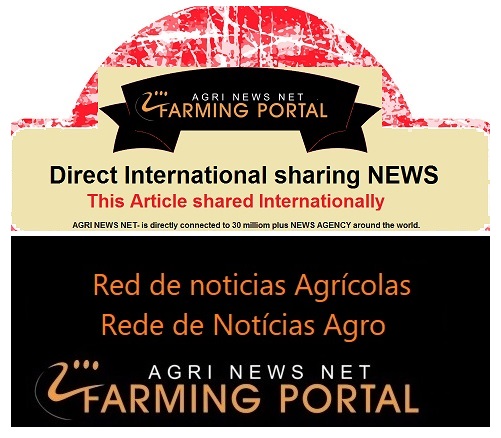World Farming Agriculture Commodity news - Weekly Updated - Exclusive and very popular -
Oil demand in China has slowed markedly this year amid the country's shift to electric vehicles and natural gas, Goldman Sachs analysts said.The firm estimates that oil demand growth in the country is down to 200,000 barrels per day for 2024 compared to last year, with overall consumption down by 300,000 barrels a day.The shift from gas-fueled cars to electric and hybrid vehicles alone has reduced demand by 500,000 barrels a day, the analysts said. China's EV sector has expanded rapidly, with three of its biggest electric car makers hitting record sales in June. A report from last month finds Chinese EV companies are catching up to — and even beating — industry leader Tesla when it comes to innovation.
Europe's energy prices are trading in negative territory with increasing frequency, and it's because of strong solar and wind generation in the region.In the latest example, Bloomberg reported that power prices in several markets slid below zero for Wednesday. For instance, Germany's day-ahead auction on Tuesday fell under zero for six individual hours, according to cited data from Epex Spot SE. Since consumer rates are typically agreed on ahead of time, this doesn't mean that households are receiving reimbursements for their power use. Instead, day-ahead auctions concern raw energy. When prices turn negative in this market, it signals a meaningful imbalance between electric supply and demand, caused when solar and wind generation is strong at the same time.
CBOT Soy prices declined 3.8% in the last two weeks (-10% in the last month), having cut through the USD 10/bu barrier. Soymeal and soy oil prices dropped by 2.5% and 3.9% respectively, which should result in a small recovery of depressed crush margins.
CBOT Wheat fell 6% in the last two weeks, following the downward movement of the G&O complex and disappointing buying from Egypt.The deterioration in prices took place despite a 1.6% drop in the US dollar index in the same period.
ICE Arabica futures increased to USc 243/lb, nearing the 12-year high of USc 258/lb on the second contract. Arabica futures rallied after a cold front turned into a very minor and isolated frost in some Brazilian coffee plots. Port congestion, disrupted Red Sea transit, and implementation of the EU’s Regulation on Deforestation-free Products (EUDR) are all supporting the market.

This periodical update provides a market outlook for dairy, cattle, wheat, and other key commodities, and gives an overview of what developments to watch in the upcoming months in North America.
- • Economy: Cutting rates.
- • Climate: Record yields in sight.
- • Logistics: Port congestion easing, eyes on the US East and Gulf Coast labor union negations
- • Consumer: Precipitous declines in restaurant demand continue as consumers cut their food budgets.
- • Cattle: US beef cow herd has stabilized, supply declines expected as rebuild progresses
- • Corn: Massive new crop set to collide with corn in the bin.
- • Dairy: Milk production still lower versus the prior year, but the margin outlook has improved.
- • Farm Inputs: Something’s gotta give.
- • Feed: Resilient US feed base demand and declining by-product prices.
- • Fruits: Apple crop in WA estimated to return to ‘normal’ levels in 2024 after bumper crop in 2023.
- • Pork: Larger pork supplies and weaker exports limit summer price rally; expected to normalize.
- • Poultry: Chicken markets robust on strong domestic demand and limited supply growth.
- • Soybeans: Inadequate demand in the face of record production.
- • Sweeteners: After the drought, does Mexico now face an oversupply?
- • Tree Nuts: Price recoveries expected in 2024/25.
- • Vegetables: US potato production will be slightly lower in 2024.
- • Wheat: Major exporting countries to see another year of ending stock decline.
- • Cotton/Rice: 2023/24 marketing year goes out with a whimper/Record imports.
USDA annual report on China livestock industry
Cattle Production: USDA’s attache (post) forecasts China calf production in 2025 to decline marginally based on lower cow stocks. Cattle Imports: Post forecasts cattle imports to further decline in 2025 due to adaptability issues of imported cattle breeds, abundance of domestic cattle, and declining milk prices.
Beef Production: Post’s forecast of China beef production in 2025 to decline marginally. Additionally, sources report demand for domestic beef is flat and the inventory of finished cattle will decline.
Beef Imports: Post forecasts China beef imports in 2025 to grow marginally due to domestic production constraints and increased demand for imported cuts. Owing to economic headwinds and strong volumes of imported beef in previous years, the year-to-year growth is curbed from past trends.
Swine Production: Post forecasts China swine production in 2025 to grow marginally due to a higher sow inventory in 2024.
Swine Imports: Post forecasts China swine imports in 2025 to be stable from 2024. The consensus is that China’s swine herd has recovered following its decimation by African swine fever (ASF) that continued through to 2021 and that integrated pork industry members have improved herd management. Additionally, sow numbers are being met mostly by domestic breeds and complemented by modest imports.
Pork Production: Post forecasts China pork production to decline in 2025 because of expected fewer swine for slaughter and weak pork demand. Post expects pork production in the second half of 2025 to be higher than in the first half as swine companies react to price signals in late 2024 and early 2025 to begin increasing production.
Pork Imports: Post forecasts pork imports in 2025 to remain flat because of weak consumer demand in the sluggish economy. In addition, industry sources report imported pork has not been moving as quickly through the market as before and traders appear to have adequate inventories
 World Farming Agriculture and Commodity news - Short update - 19th August 2024
World Farming Agriculture and Commodity news - Short update - 19th August 2024
Weekly USDA US beef, pork export sales
Beef: Net US sales of 15,900 MT for 2024 were down 44 percent from the previous week and 8 percent from the prior 4-week average. Increases were primarily for Japan (5,100 MT, including decreases of 200 MT), South Korea (4,300 MT, including decreases of 300 MT), China (2,200 MT, including decreases of 200 MT), Mexico (1,300 MT, including decreases of 100 MT), and Indonesia (1,000 MT). Exports of 12,500 MT were down 11 percent from the previous week and 19 percent from the prior 4-week average. The destinations were primarily to South Korea (2,900 MT), Japan (2,800 MT), China (1,700 MT), Mexico (1,400 MT), and Taiwan (1,300 MT).
Pork: Net US sales of 19,300 MT for 2024--a marketing-year low--were down 7 percent from the previous week and 34 percent from the prior 4-week average. Increases were primarily for Mexico (4,700 MT, including decreases of 100 MT), Canada (3,100 MT, including decreases of 600 MT), Japan (3,000 MT, including decreases of 700 MT), Colombia (2,100 MT, including decreases of 200 MT), and China (1,400 MT, including decreases of 100 MT). Net sales of 200 MT for 2025 were reported for Australia (100 MT) and Japan (100 MT). Exports of 28,800 MT were unchanged from the previous week, but down 8 percent from the prior 4-week average. The destinations were primarily to Mexico (12,900 MT), Japan (3,900 MT), China (2,300 MT), Colombia (2,100 MT), and Canada (2,000 MT).
.
















